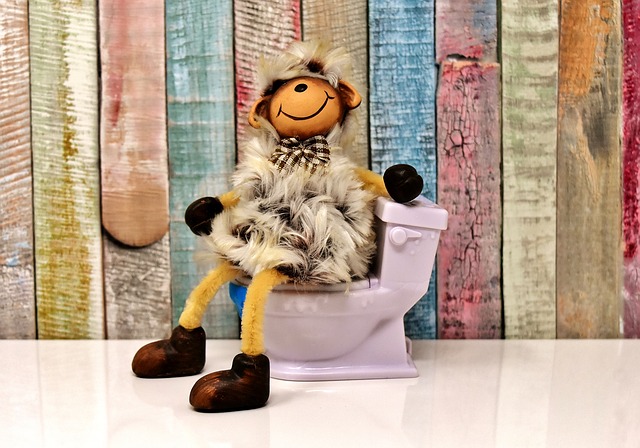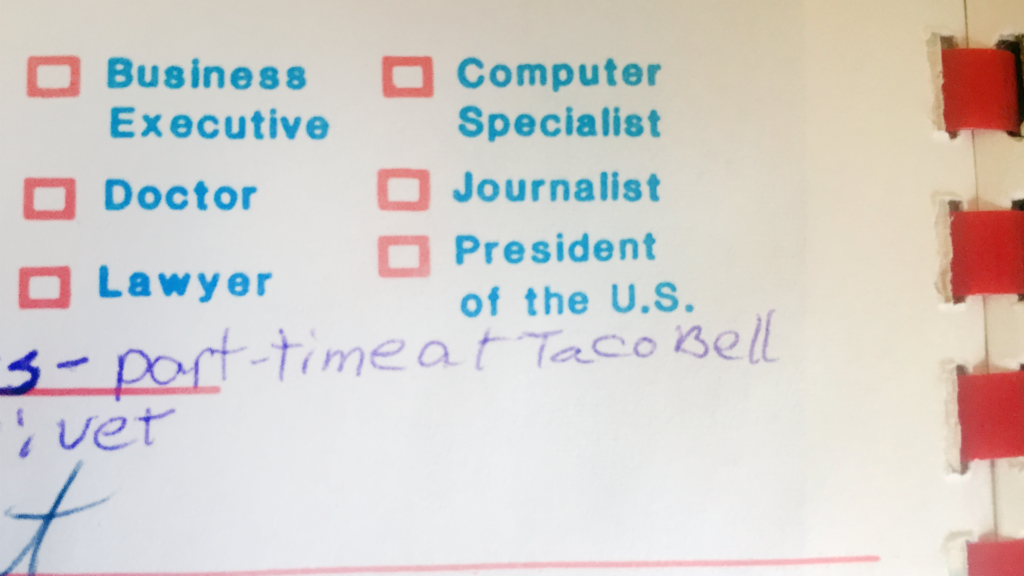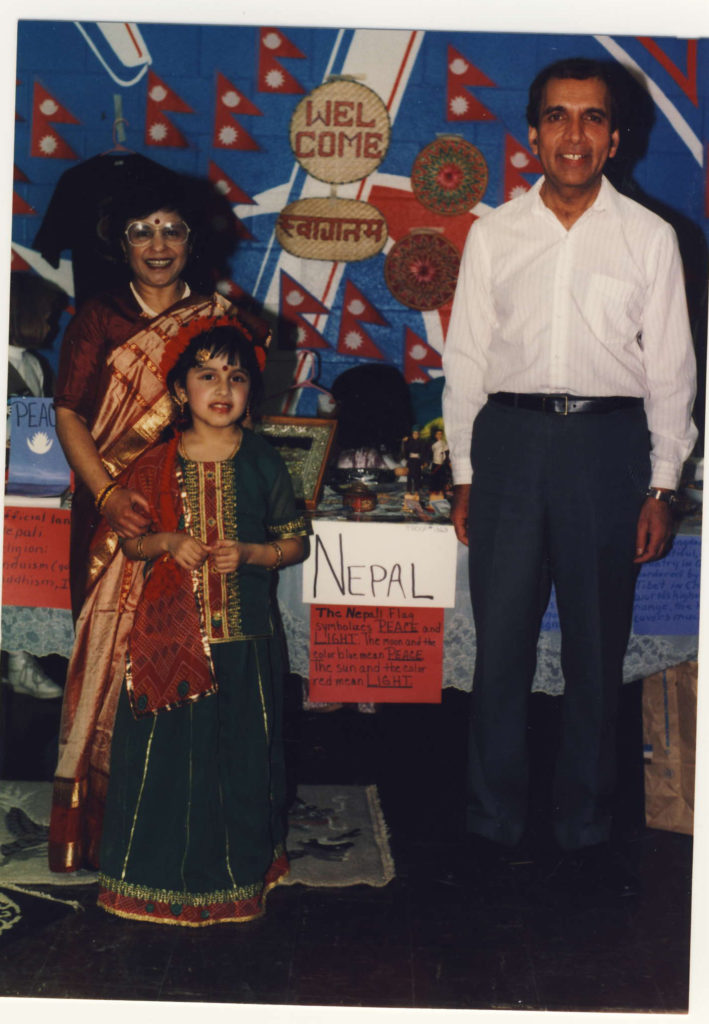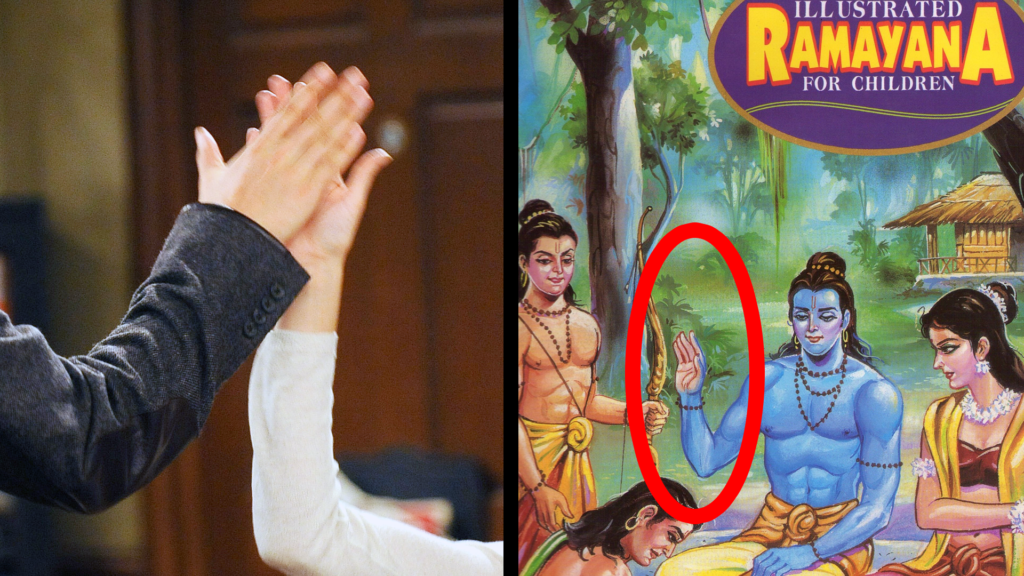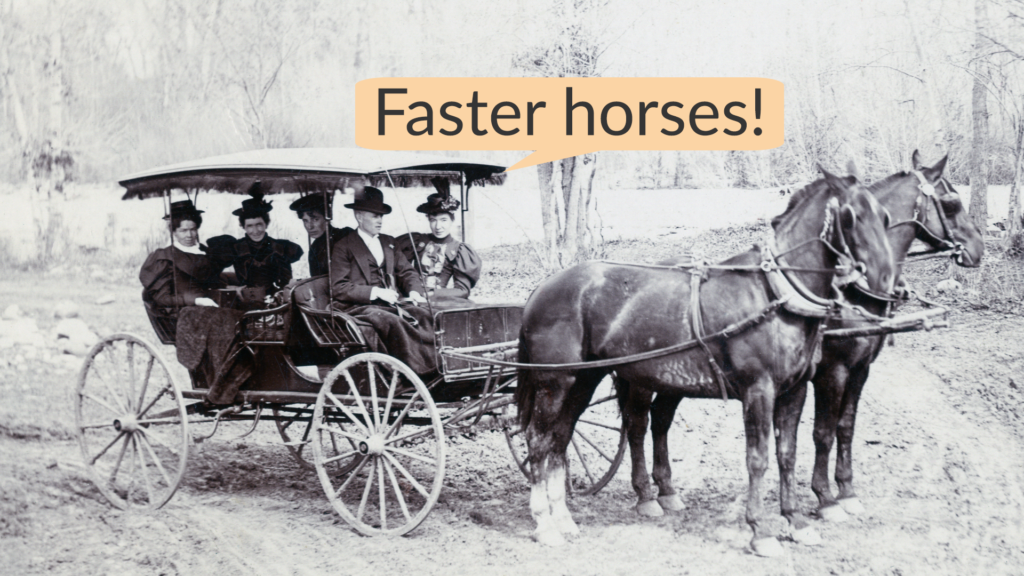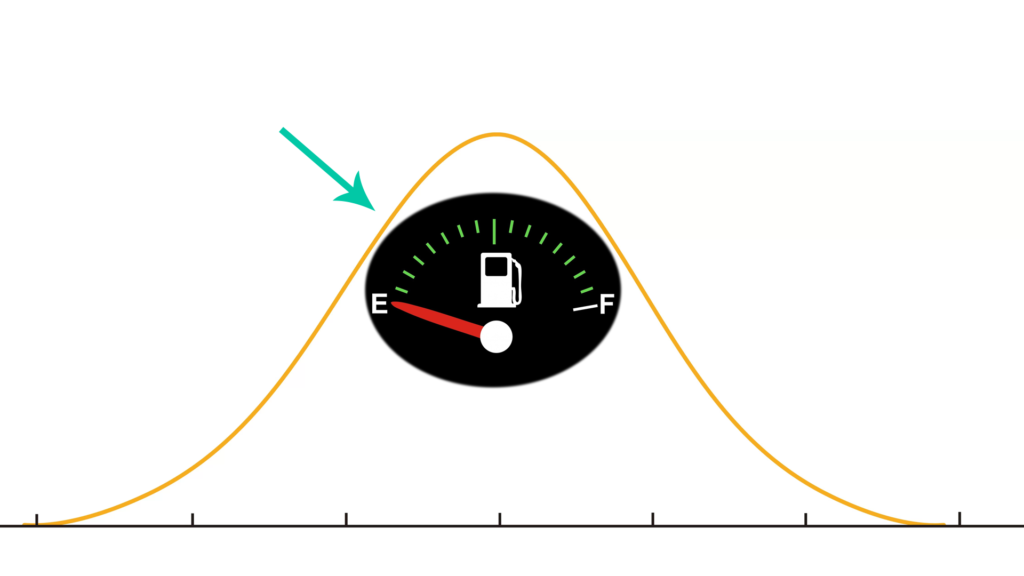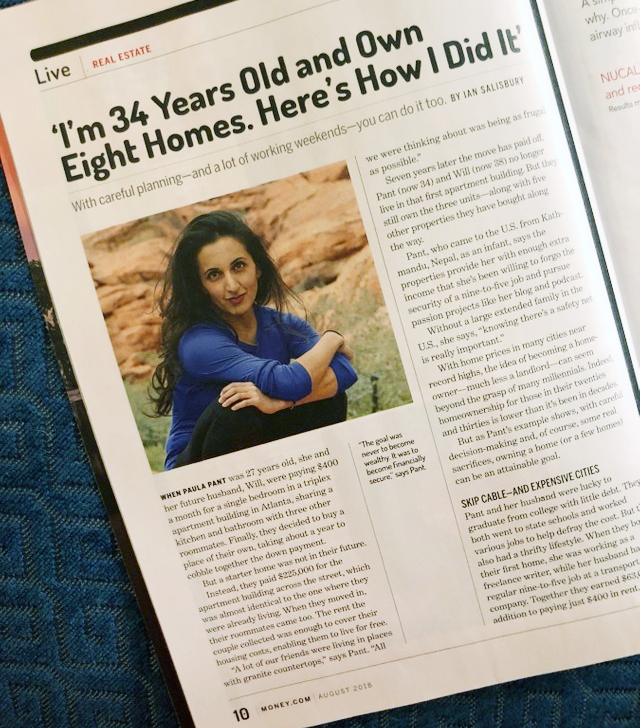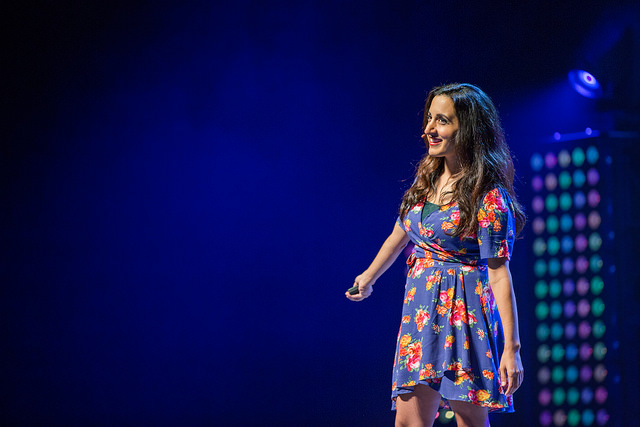
One month ago, I made a speech at the World Domination Summit in Portland about the importance of being yourself, even if this requires setting difficult boundaries or relinquishing your people-pleasing tendencies.
If you’re a creative entrepreneur, such as an artist, writer, musician, designer, craftsman, entrepreneur, or any other type of creator … this is advice you might not have heard before.
I argue that your best business move is to stop giving a sh*t about what other people think. Even your customers.
It’s a counterintuitive philosophy, one that runs contrary to the seemingly-benign “I want to help others” mindset that’s preached in the world of online entrepreneurship. I argue that your effect on others is outside of your control, so the best thing you can do is be yourself and let the chips fall where they may.
Bending over backwards to please others is inauthentic and, ultimately, ineffective. People will be served the most when they see a confident, strong person who is true to themself.
As long as you’re acting ethically and not intentionally harming anyone, you’re doing your job. It’s not your responsibility to coddle others or act overly-diplomatic at the expense of your voice.
Here’s the speech. If you’ve ever struggled to find your inner voice, especially within your career or business, I think you’ll enjoy this.
Based on the fact that I’m standing on this stage, you probably assume I’m here to tell you stories about me.
And you’re correct. Kinda. But I’m an introvert, and I’d prefer to start by asking you a few questions about yourself.
I’m curious —
Raise your hand if you have a blog or website, where you share your stories with the world. Keep your hands up.
Raise your hand if you have any social media accounts: Facebook, Twitter, Instagram.
Look around.
Everyone in this room has some type of an internet presence. This means you’re cultivating the side of you that other people see. You don’t post everything. You can’t. It’s impossible.
I don’t take pictures of myself sitting on the toilet, even though that’s a frequent part of my life. I don’t post pictures of myself brushing my teeth, even though I do that twice a day. (Well, most days.)
By the nature of the internet, we have to choose what we share. We have to choose which stories to tell. And we have to post a selective, curated version of ourselves. That’s intrinsic to the medium.
But that’s also where problems start to arise.
Problems surrounding the presentation of ourselves, and the tension between who we are, and who the world wants us to be.
Those problems don’t just apply to our online presence. They apply to any act of creation or self-expression — whether you’re an entrepreneur, artist, writer, musician, or anyone who creates anything.
Those problems, and how to solve them, are what this talk is about. And the solution to these problems is a cliche yet incredibly complex concept called authenticity.
We’ll talk about that in a moment.
But first, let me introduce myself.
My name is Paula Pant.
Actually, I take that back. That’s not totally true. The name that’s on my birth certificate is Pragya.
I was born in Kathmandu, which is the capital of a country called Nepal. It’s located in the Himalayas, sandwiched between China and India. Our claims to fame are being the home of Mt. Everest and being the birthplace of Buddha — both of which are fun talking points at cocktail parties.
By the way, if I’m the only Nepalese person you’ve ever met — that’s cool. I get that a lot.
I’ll be at a party, and someone will be like, “Hey, where are you from?” I reply, “Ohio.” And they say, “Nah, where are you really from?,” and I respond, “Well, I was born in Nepal.”
Oftentimes, after some conversation, they’ll remark, “You know, I’ve never met a Nepalese person before.”
And so of course I reply, “Well, you never forget your first!”
I was born into this identity as Pragya of Kathmandu, and I moved to the U.S. as a child. Speaking of which, do you want to see a terrible passport photo? Check this out — I had such a bad haircut that my immigration documents listed me as a boy.
I grew up in Ohio, and in many ways, I was a typical All-American kid. I watched Looney Tunes, Duck Tales, and Darkwing Duck. I ate Gushers and Fruit by the Foot. I played Carmen Sandiego and the Oregon Trail (never realizing that one day I’d actually travel to Oregon! And I didn’t die of dysentery!)
I never felt as exotic as the name “Pragya of Kathmandu” might imply. At heart, I was a kid from Ohio. But the other kids at school didn’t see me that way. I was the only person of color in my class, and I was among only two or three people of color in my entire K-8 elementary and middle school.
The other kids made fun of me a lot; I looked weird. I looked different, which is weird. I had a funny religion, the one that worships cows. And I had a funny name.
One day, when I was around 5, I went to a friend’s house. I tried to teach her grandfather how to say my name. After several failed attempts, he said, “I am sick and tired of trying to learn your name.”
Like most young children, I was very literal. When he said he was sick and tired, I thought that I had made him physically ill — just with my existence.
I told my mom and dad about it. My parents suggested that we legally change my name. But here was the catch. We wouldn’t get rid of Pragya. Instead, we would give me an additional name. This additional name would become the leading name, the first name, which therefore would slide Pragya into the default middle name position.
By doing that, I could be both.
My parents said I could choose any name I wanted as long as it began with “P.” They liked alliteration.
We would lay in bed at night and flip through a book of baby names. We read through all the female P names — Paige, Penelope — and we narrowed it down to either Paula or Pamela. I spent a few weeks deliberating between those two names.
The deciding factor? My parents told me I was going to have to learn to spell my name. Paula was one letter shorter, and therefore easier to spell. So I picked that one.
My parents hired a lawyer and we had the name Paula legally added to my identity. Today my name is Paula Pragya. I typically introduce myself to Americans as Paula, and to Nepalese people as Pragya.
I embraced this split identity.
This is me as Paula, an all-American kid. Here’s a picture of the journal where I documented my school years. My childhood ambition was to work part-time at Taco Bell.
This is me as Pragya.
Sure, I was both, but I was also neither, and I constantly had to switch identities.
Here’s the thing:
The social norms of these two worlds are different. Behaviors that are acceptable in one culture are weird in the other, and vice versa.
I kept toggling between cultures, and especially as a kid, this was extremely confusing. I kept missing social cues that everyone else thought were obvious.
In the first grade, for example, I didn’t know how to high-five. I thought that if you raised one hand in the air, palm facing outward, that meant you were granting someone a favor, like in the Ramayan.
If someone raised their hand to give me a high-five, I would just stand there and stare at it. No wonder the other kids thought I was weird.
I spent my time trying to figure out: How should I act? How should I respond to cues? How should I behave? I spent my time observing, learning, and trying not to make social gaffes.
And because I was so occupied with this effort —
I spent zero time asking myself, “Hey, who am I?”
Fast-forward 20 years. I started a blog, which later led to a podcast.
What I didn’t realize when I started this blog and podcast is that this same childhood dilemma — the habit of looking to the outside world to tell me how to behave, who to be and how to act — this same challenge would show up in my work.
And it would affect my work life, as much as it had affected my home and school life as a kid, until I figured out a way to resolve it.
Here’s what happened:
I decided I wanted to make money as an online writer and teacher.
The only problem? I didn’t know how. So I read mountains of advice about email marketing and product launches. Most of this advice can be boiled down to two steps:
- Discover what your audience wants.
- Serve it to them.
Okay, seems simple enough.
I mastered step one. I gathered survey data, I ran heat maps, I tracked clicks and opens and shares and comments and likes and unsubscribes. I discovered what my audience wanted.
And then I stopped caring.
I had all the market research in the world, and no motivation.
At first, I couldn’t figure out why I’d lost my mojo. Was I depressed? Self-sabotaging? It didn’t make sense.
I’d struggled for years to build an audience. Now I had a platform I was proud of, and a message I believed in — and yet, I had no motivation to keep going. Why?
That’s when I realized: I didn’t want to serve the survey data. Not if that meant that the metrics would become my new boss.
You see, I was letting other people tell me what to do. I was letting them guide my voice. But no audience survey will ever say, “We want you to just be you. We want you to be creative. We want you to dig deep and think big and be original.”
No. They say, “can you explain how to buy homeowners insurance?”
You don’t need me to answer that. A thousand people have answered that a thousand times, all over the internet. My answer will not be unique. And since value comes from scarcity, my answer, therefore, will not be valuable.
Value comes from what’s unique within.
Value comes from your ideas, your thoughts, your insights — not your willingness to write for clicks and keywords.
Eventually I realized —
I could try to read the crowd. Or I could be myself. I could try to be accepted. Or I could be me.
So I threw away the market research, and I picked authenticity.
Authenticity is a complex concept, so let’s talk about what this means. Here are three qualities to authentic living.
#1: You’re responsible for what you do. You’re not responsible for how you’re viewed.
Your job is to be you. Your job is not to tell people how to interpret you.
At a fundamental level, what other people think about you is none of your business.
This can be a hard pill to swallow, particularly if you’re an entrepreneur, an artist, a writer, or any type of creator. Because in these worlds, what other people think of you is literally your business model.
You’re in the business of being accepted, admired and externally validated. That’s what you do for a living. You’re in the business of being liked. Your worth is measured by Facebook likes and Instagram likes.
And yet —
Paradoxically, there’s only one way to win at the business of being liked: by not caring. Stop caring, and start creating. That’s how you come up with work that’s inspired, not work that’s “email 6 out of 10 in Autoresponder A.”
If you’re a creator, your job is to create. Your job is not to tell people how to receive your creations, or how to interpret your creations.
Your job is to create, release it into the world, and whatever happens, happens.
That doesn’t mean you shouldn’t market. Marketing is wonderful. Kowtowing is not.
During the creative process, if you find yourself asking:
- “What do they want?”
- “What will they think?”
- “How will they take this?”
… you’re asking the wrong questions.
The more essential questions are: “What’s inside of me? What inner voice can I express? What unique value can I share with the world?”
At the end of the day, there’s a huge difference between asking:
- “How can I contribute?” — vs. —
- “How will they view my contribution?”
#2: Authenticity is not giving a sh*t about shoulds.
There’s a famous quote that’s attributed to Henry Ford. The quote says: “If I had asked people what they wanted, they would have said faster horses.”
There’s no proof that Henry Ford actually said this. But whether or not that quote is historically accurate, the point remains. If Elon Musk had asked people what they wanted, they would have said a car with better gas mileage.
But Elon never bothered asking. Because he knows that you cannot change history from the middle of the bell curve. And he knows that design by consensus yields average results.
True innovation comes from vision. We see this in technology. We see this in art, music, writing. But often we fail to see this in ourselves.
We allow the crowd to dictate who we are: our dreams, goals, fears. We crowdsource our vision and live a life of shoulds.
Authenticity is the art of not giving a shit about should.
This sounds fine on the surface, when we’re sitting in an auditorium, pontificating about our lives. But it’s much scarier when you face the reality that people will judge you. They will criticize you. They will tell you that you’re wrong.
The more you try to step away from should, the more ‘shoulds’ they throw at you: You should be married. You should have kids. You should have a job.
They may be talking about you, but it’s not really about you. Your decisions are triggering to them, and they’re reacting to that.
Authenticity means accepting that if other people get triggered, that’s not your responsibility. You may be the catalyst, but you’re not responsible for their emotions.
To that extent, authenticity is the art of setting boundaries. This doesn’t mean you exclude people from your life. It means you set healthy emotional boundaries, such that their thoughts and feelings don’t get internalized as your own.
#3: Authenticity is courage + vulnerability.
Authenticity is the combination of courage and vulnerability. These two concepts may sound like polar opposites, but they are inseparable. You cannot have one without the other.
Courage is not a lack of fear. Courage is moving forward in spite of the fear.
When you show up with courage, you’re making a statement that “yeah, I’m terrified. I own that. And I’m going to do it anyway.”
When people act courageously, they sometimes get hurt.
- When you fall in love, you take a risk.
- When you make an investment, you know your investment might flop.
- When you make a bold statement in art, fashion, music or writing, you might get mocked. Or worse, ignored.
- When you travel, you might get mugged. Or lost. Or both.
- When you make a request, you might get denied.
That’s why there’s no courage without vulnerability, and there’s no vulnerability without courage. The two are inseparable. And both together will lead you to a more authentic life.
When you move in a direction that demands courage and vulnerability, you move towards something greater than the sound of “should.”⠀
Here’s my question: what scares you? What idea sounds bold and exciting and terrifying all at the same time?
When you move in that direction, you move into a more authentic space.
Here’s my challenge:
- Be courageous. Do something everyday that scares you.
- Be vulnerable. Accept that people might not like it.
- Be authentic.
You can listen to a podcast episode in which I give this speech — and then talk about the lessons that inspired it — here.
Oh hey, by the way, Money Magazine featured my story in the August print edition! You can grab it on newsstands if you’re so inclined. 🙂
Image credit: Chris Guillebeau / World Domination Summit
